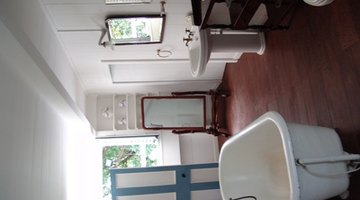How Does Lysol & Bleach Kill Microorganisms?
Not all household cleaners are created equal. Cleaners, such as bleach and Lysol, contain microorganism-killing properties. There are many cleaners on the market, but some only remove dirt and grease, while leaving illness-causing microorganisms behind.

Bleach
Microorganisms are bacteria, molds, fungi, protozoa and algae, among others. Bleach kills illness-causing microorganisms by attacking the proteins that make up the bacteria, algae, etc. This causes the proteins to unfold and break apart which leads to the death of the microorganism. Hypochlorous acid is the active ingredient in bleach that attacks the proteins which make up the microorganisms.
Lysol
Lysol products contain various forms of ammonium chloride such as octyl decyl dimethyl ammonium chloride. Many Lysol products also contain bleach or ingredients that are in bleach such as hypochlorous acid. Other Lysol products contain peroxide which is also a bacteria-killing substance. The ammonium chloride works in Lysol as a dirt-releasing substance while the others, such as bleach, attack the microorganisms by unfolding and separating the proteins.
Products
When purchasing cleaners, read the ingredients label. Learn what the individual ingredients do. Compare cleaners so that you can distinguish which cleaners are more effective in killing bacteria and protozoa.
The Drip Cap
- Not all household cleaners are created equal.
- The ammonium chloride works in Lysol as a dirt-releasing substance while the others, such as bleach, attack the microorganisms by unfolding and separating the proteins.
- Learn what the individual ingredients do.
References
Writer Bio
Crystal Lassen hails from Kansas City, Mo. and has been a book critic since 2008. Her reviews have appeared on the Publisher's Weekly website and are largely concerned with current events. She holds a Bachelor of Arts degree in English with an emphasis in creative writing from The University of Kansas.
Photo Credits
- salle de bain style colonnial image by oldjazz77 from Fotolia.com
- salle de bain style colonnial image by oldjazz77 from Fotolia.com
More Articles



